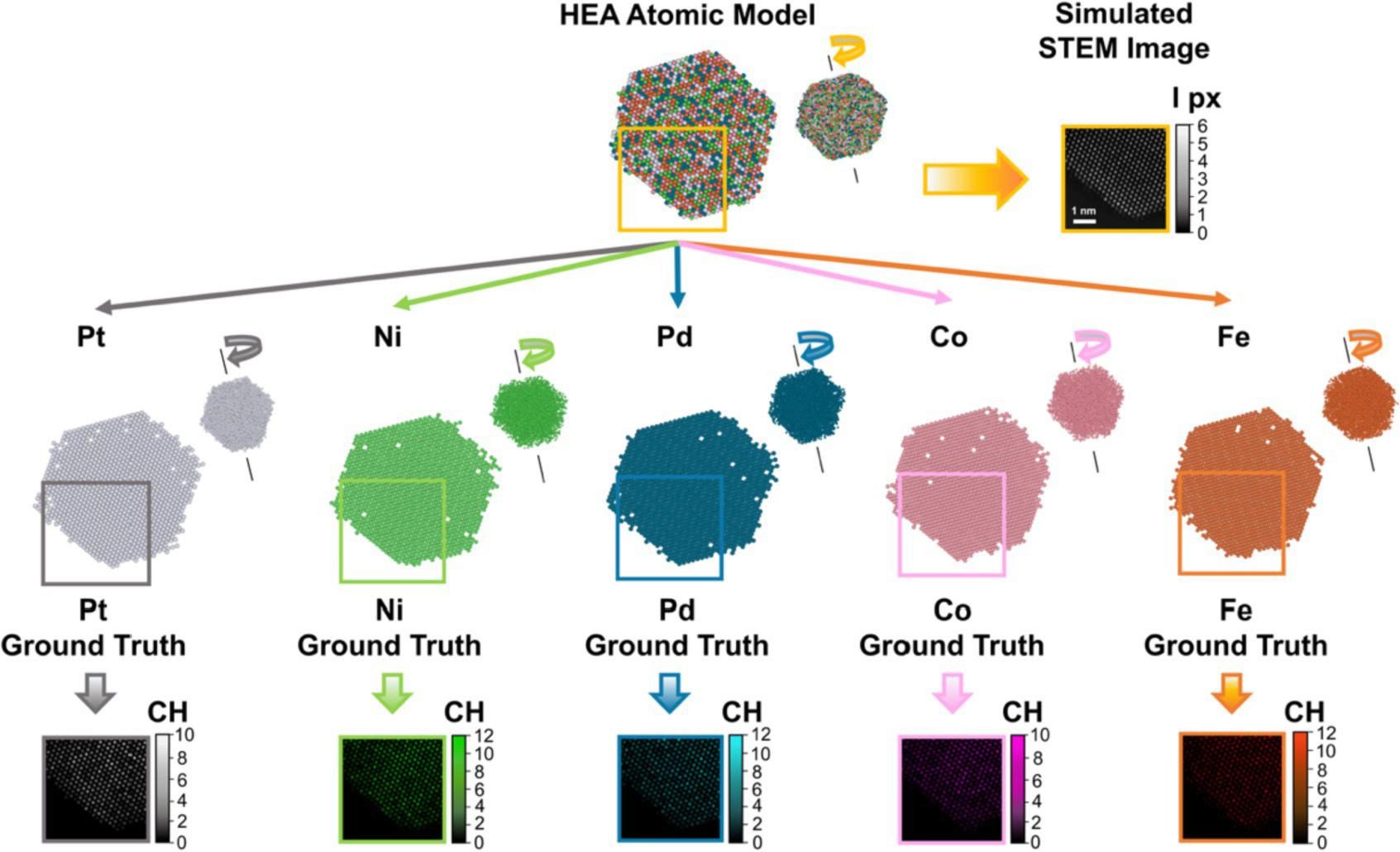Deep learning for mapping element distribution of high-entropy alloys in scanning transmission electron microscopy images
September 18th, 2021
Categories: Applications, Deep Learning, Machine Learning, Artificial Intelligence

Authors
Ragone, M., Saray, M.T., Long, L., Shahbazian-Yassar, R., Mashayek, F., Yurkiv, V.About
The latest developments of machine learning (ML) and deep learning (DL) algorithms have paved the way to effectively analyze the atomic structure of chemically-complex materials. In this work, we present a DL model built upon a fully convolutional neural network (FCN) to resolve the random elements distribution of complex PtNiPdCoFe high-entropy alloys (HEAs) represented in the scanning transmission electron microscopy (STEM) images at atomic resolution. The objective of the proposed neural network is to learn through semantic seg-mentation the non-linear correlations between the pixels’ intensities of STEM images and the number of atoms of different constituent elements in the atomic columns (i.e., column heights) in the HEA’s structure. We demonstrate that our DL model is capable of correctly estimating the column heights or with an error up to 1 atom for the majority of the columns in the HEA structures represented in the simulated STEM images used to train and test the network. This establishes a sufficiently high level of confidence in the estimation of the element distribution in experimental images. The predicted distributions in different STEM images of nanoparticles reveal inhomogeneous fluctuations with local aggregations in the elemental atomic fractions within the columns. The most pronounced aggregation is displayed by Pt, which is the largest and most electronegative element in the synthesized HEA material. The proposed DL method is beneficial for an in-depth characterization of the structural properties of HEAs and multielement 3D materials in general.
Keywords: Deep learning, High entropy alloys, STEM images, Column heights, Elements distribution
Resources
URL
Citation
Ragone, M., Saray, M.T., Long, L., Shahbazian-Yassar, R., Mashayek, F., Yurkiv, V., Deep learning for mapping element distribution of high-entropy alloys in scanning transmission electron microscopy images, Computational Materials Science, no 201, lsevier B.V., September 18th, 2021. https://doi.org/10.1016/j.commatsci.2021.110905